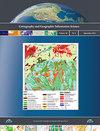A web-based analytical framework for the detection and visualization space-time clusters of COVID-19
IF 2.4
3区 地球科学
Q1 GEOGRAPHY
Cartography and Geographic Information Science
Pub Date : 2023-10-17
DOI:10.1080/15230406.2023.2264749
引用次数: 1
Abstract
The COVID-19 pandemic has had a profound impact worldwide and continues to spread due to various mutations of the virus. Many governmental and nonprofit agencies at different levels have quickly developed COVID-19 dashboards to disseminate information on the pandemic to the public. However, most of these systems have mainly distributed “plain” information (e.g. cases, death counts, vaccination), and rarely provided insights that can be gained from spatiotemporal analyses, such as the detection of emerging clusters. The results from these analyses hold tremendous potential for health policymakers as they try to identify ways to slow down transmission. We present a web-based geographic framework to detect and visualize space-time clusters of COVID-19. Our tightly coupled framework integrates the prospective space-time scan statistics and local indicators of spatial association (LISA) with novel 2D and 3D interactive visuals in a cyber environment (http://159.223.164.41/app/). We illustrate the applicability of our approach using COVID-19 data for the continental US. Our framework is portable to other regions that may experience infectious diseases but is also flexible to handle data of different spatial and temporal granularities. This paper fits within an effort to integrate space-time analytics for the monitoring of infectious diseases in web environment, ultimately improving health surveillance systems.基于web的新型冠状病毒时空聚类检测与可视化分析框架
新冠肺炎大流行在世界范围内产生了深远影响,并因病毒的各种变异而继续蔓延。许多不同级别的政府和非营利机构迅速开发了COVID-19仪表板,向公众发布有关大流行的信息。然而,这些系统中的大多数主要分发“普通”信息(例如病例、死亡人数、疫苗接种),很少提供可以从时空分析中获得的见解,例如检测新出现的群集。这些分析的结果对卫生政策制定者具有巨大的潜力,因为他们试图确定减缓传播的方法。我们提出了一个基于网络的地理框架来检测和可视化COVID-19的时空集群。我们的紧密耦合框架将前瞻性时空扫描统计数据和空间关联的局部指标(LISA)与网络环境中新颖的2D和3D交互式视觉结合在一起(http://159.223.164.41/app/)。我们使用美国大陆的COVID-19数据说明了我们的方法的适用性。我们的框架可以移植到其他可能发生传染病的地区,但也可以灵活地处理不同空间和时间粒度的数据。本文致力于将时空分析整合到网络环境下的传染病监测中,最终改善健康监测系统。
本文章由计算机程序翻译,如有差异,请以英文原文为准。
求助全文
约1分钟内获得全文
求助全文
来源期刊
CiteScore
5.20
自引率
20.00%
发文量
23
期刊介绍:
Cartography and Geographic Information Science (CaGIS) is the official publication of the Cartography and Geographic Information Society (CaGIS), a member organization of the American Congress on Surveying and Mapping (ACSM). The Cartography and Geographic Information Society supports research, education, and practices that improve the understanding, creation, analysis, and use of maps and geographic information. The society serves as a forum for the exchange of original concepts, techniques, approaches, and experiences by those who design, implement, and use geospatial technologies through the publication of authoritative articles and international papers.

 求助内容:
求助内容: 应助结果提醒方式:
应助结果提醒方式:


